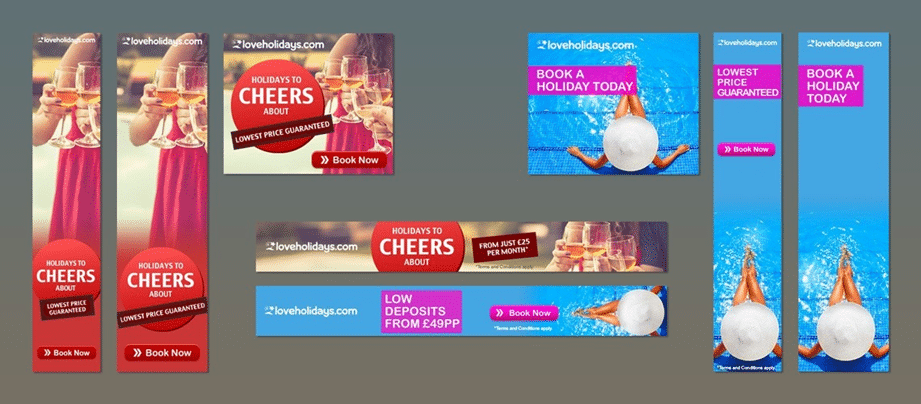
Case study summary
- The online travel retailer had a huge amount of cross device data and complex customer journeys that it needed to utilise
- Developed a custom attribution model with machine learning to predict holiday bookings to determine the best marketing models
- Identified high sales funnel and email marketing reactivations and stronger performers
- Insights were used to adjust digital bids and budgets to drive 190% sales growth
Challenge
How do you stand out from the crowd in a competitive tourism and travel space with many companies chasing each click?
Loveholidays had data for millions of anonymous user interactions across many platforms and channels. They could not be sure which connections were driving sales and which were not contributing to the process. Their attribution model couldn’t identify how different marketing channels and devices worked together to drive sales.
The online travel agency needed data-driven marketing to optimise campaign efficiency and increase marketing ROI.
Solution
Loveholidays developed a custom attribution model to monitor all its marketing activities. They use many channels – from display ads to newsletters – and needed a model that could attribute the exposures people had to their messages across all of them.
Developing the model
Working with agency Metageni, the team developed a model to predict holiday bookings. They explored multiple supervised machine learning classifiers models, including decision trees and high order Markov chains (statistics models to calculate to probability of events) and ensemble methods of predicting holiday booking to determine the best model.

Results
The best performing model tended to credit ‘upper funnel’ marketing activity (generating brand awareness and nurturing interest, such as display ads) more strongly than ever before and showed interesting patterns of variation between channels. It also highlighted key opportunities, including their email newsletters to past customers.
Loveholidays used their attribution model to re-estimate marketing cost per sale and adjust digital bids and budgets. This drove efficient growth. The model could also identify, at any stage, the likelihood that a user with a given set of interactions would go on to make a booking. That gave them insights about future sales and conversions.
The holiday brand achieved year-on year-sales growth of more than 190%, beating expectations.
In 2019, the firm came UK number 1 in the UK’s Sunday Times Profit Track 100 list. Loveholidays continues providing dynamic bidding for further ROI optimisation.
Why it matters
A mountain of customer data is useless without meaning. Most firms struggle with effective attribution, not being sure which connections were really moving people along the path to purchase. Understanding attribution shows you where your budgets are working and what could be removed from a media plan.
LoveHolidays showed that by investing in understanding their customers responses at every stage in the sales funnel, from awareness to post-purchase loyalty, they could get far more efficient use of their marketing budget and double sales growth. The model they developed makes their marketing permanently more effective.
